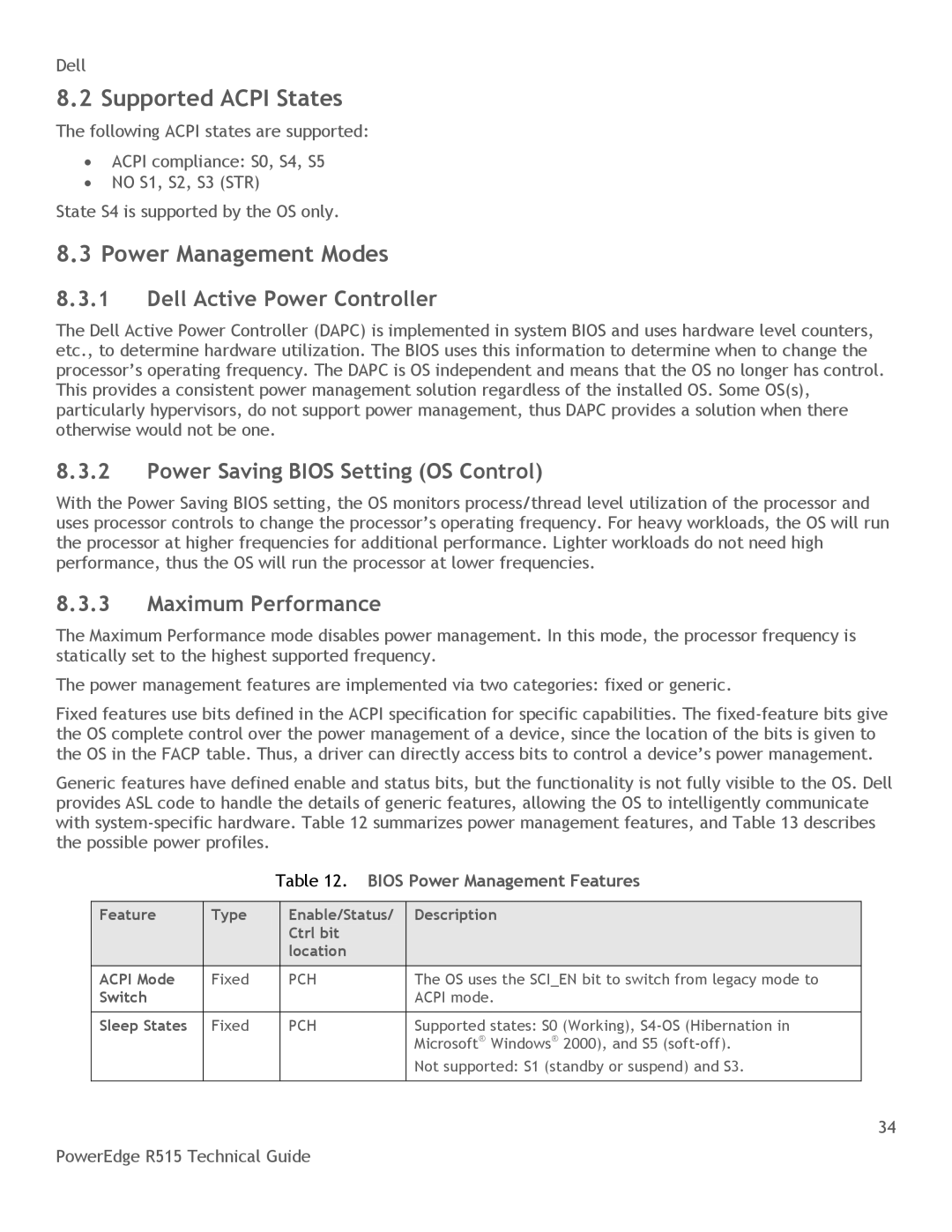Dell
8.2 Supported ACPI States
The following ACPI states are supported:
∙ACPI compliance: S0, S4, S5
∙NO S1, S2, S3 (STR)
State S4 is supported by the OS only.
8.3 Power Management Modes
8.3.1Dell Active Power Controller
The Dell Active Power Controller (DAPC) is implemented in system BIOS and uses hardware level counters, etc., to determine hardware utilization. The BIOS uses this information to determine when to change the processor’s operating frequency. The DAPC is OS independent and means that the OS no longer has control. This provides a consistent power management solution regardless of the installed OS. Some OS(s), particularly hypervisors, do not support power management, thus DAPC provides a solution when there otherwise would not be one.
8.3.2Power Saving BIOS Setting (OS Control)
With the Power Saving BIOS setting, the OS monitors process/thread level utilization of the processor and uses processor controls to change the processor’s operating frequency. For heavy workloads, the OS will run the processor at higher frequencies for additional performance. Lighter workloads do not need high performance, thus the OS will run the processor at lower frequencies.
8.3.3Maximum Performance
The Maximum Performance mode disables power management. In this mode, the processor frequency is statically set to the highest supported frequency.
The power management features are implemented via two categories: fixed or generic.
Fixed features use bits defined in the ACPI specification for specific capabilities. The
Generic features have defined enable and status bits, but the functionality is not fully visible to the OS. Dell provides ASL code to handle the details of generic features, allowing the OS to intelligently communicate with
Table 12. BIOS Power Management Features
Feature | Type | Enable/Status/ |
| Description |
|
| Ctrl bit |
|
|
|
|
|
| |
|
| location |
|
|
|
|
|
|
|
ACPI Mode | Fixed | PCH |
| The OS uses the SCI_EN bit to switch from legacy mode to |
Switch |
|
|
| ACPI mode. |
|
|
|
|
|
Sleep States | Fixed | PCH |
| Supported states: S0 (Working), |
|
|
|
| Microsoft® Windows® 2000), and S5 |
|
|
|
| Not supported: S1 (standby or suspend) and S3. |
|
|
|
|
|
34
PowerEdge R515 Technical Guide
